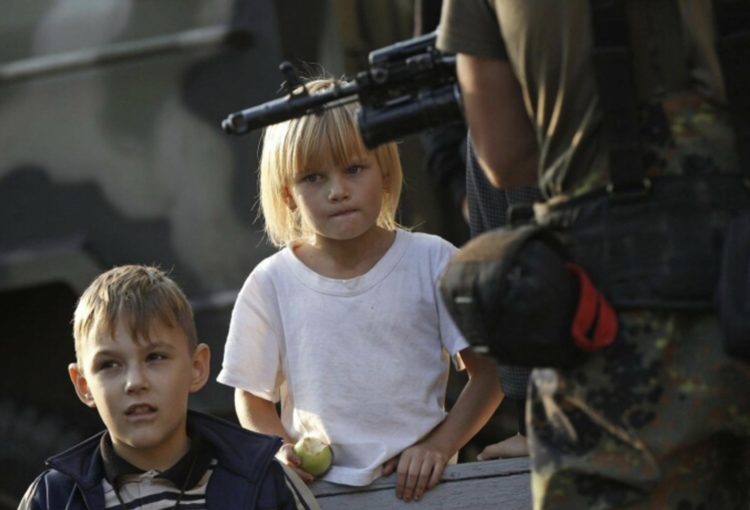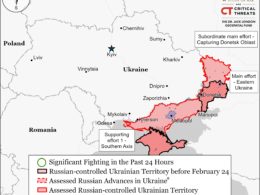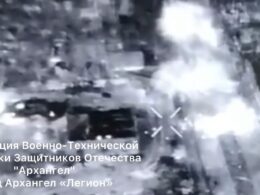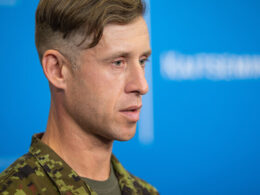On 26 July, Ukrainian forces launched a mechanized counteroffensive operation in western Zaporizhzhia Oblast and appear to have broken through pre-prepared Russian defensive positions south of Orikhiv, Zaporizhzhia Oblast, ISW reports.
Russian sources, including the Russian Ministry of Defense, claimed that Ukrainian forces launched an intense frontal assault towards Robotyne (10km south of Orikhiv), Zaporizhzhia Oblast, and broke through Russian defensive positions northeast of the settlement. Ukrainian forces likely advanced to within 2.5km directly east of Robotyne during the attack.
The battlefield around Robotyne is the point of the forward-most pre-prepared Russian defensive fortifications, indicating that Ukrainian forces managed to penetrate and drive through tactically challenging defensive positions. This kind of penetration battle will be one of the most difficult things for Ukrainian forces to accomplish in pursuit of deeper penetrations, as ISW has previously assessed.
According to ISW, Ukrainians appear to have rotated fresh forces into this area for the operation. As per unnamed Pentagon officials, Ukrainian units that participated in the 26 July attack are reserves that belong to older and more established Ukrainian brigades. Meanwhile, Russian forces remain pinned to the line apparently without rotation, relief, or significant reinforcement in this sector. Russian 58th Combined Arms Army elements have been engaged in defensive operations in this very area continually since the beginning of the Ukrainian counteroffensive in early June without relief.
Western and Ukrainian officials suggested that the attacks towards Robotyne mark an inflection in Ukraine’s counteroffensive effort. The beginning of the Ukrainian counteroffensive, according to the Western officials, is an opportune moment for Ukrainian efforts to clear Russian positions, Russian command changes following the dismissal of 58th Combined Arms Army Commander Major General Ivan Popov, and continued Ukrainian artillery strikes against Russian concentration areas in southern Ukraine.
Ukrainian President Volodymyr Zelensky also stated in his nightly address on 27 July that Ukrainian forces “had very good results today” and that he would provide more details at a later date.
ISW continues to assess that Ukrainian forces can make significant gains in their counteroffensive operations. ISW warns that such gains are likely to occur over a long period of time and interspersed with lulls and periods of slower and more grinding efforts as the Ukrainians come to successive Russian defensive lines and themselves require relief and rotation.
Other takeaways from the ISW’s report:
- The Russian Black Sea Fleet is increasing military posturing in the Black Sea, likely in an attempt to set conditions to forcibly stop and search civilian vessels and exert increased control in the area.
- Russia continues to find ways to remind Armenia and Azerbaijan that Moscow’s military and diplomatic presence in the South Caucasus is necessary.
- The Russian government may have intended for the Russia-Armenia-Azerbaijan trilateral meeting to reduce possible Iranian efforts to supplant Russian influence with Armenia by providing Shahed drones to Yerevan.
- Russian forces conducted offensive operations along the Kupiansk-Svatove-Kreminna line, in Bakhmut, along the Avdiivka-Donetsk City line, in Donetsk Oblast, and in Zaporzhia Oblast on 26 July and have made advances in certain areas.
- Ukrainian military sources reported that Russian forces have begun using Russian-produced Shahed drones against Ukraine.
Read also:
- Russian troops reinforce with advanced Ka-52M helicopters, missiles – UK intel
- Killed Kremlin media staffer propagandist, not journalist, Ukrainian media orgs say
- Russia increases Black Sea patrols, likely to intercept commercial vessels – UK intel
- Lukashenka likely aiming to exploit his influence over Wagner Group to gain concessions from Putin – ISW





